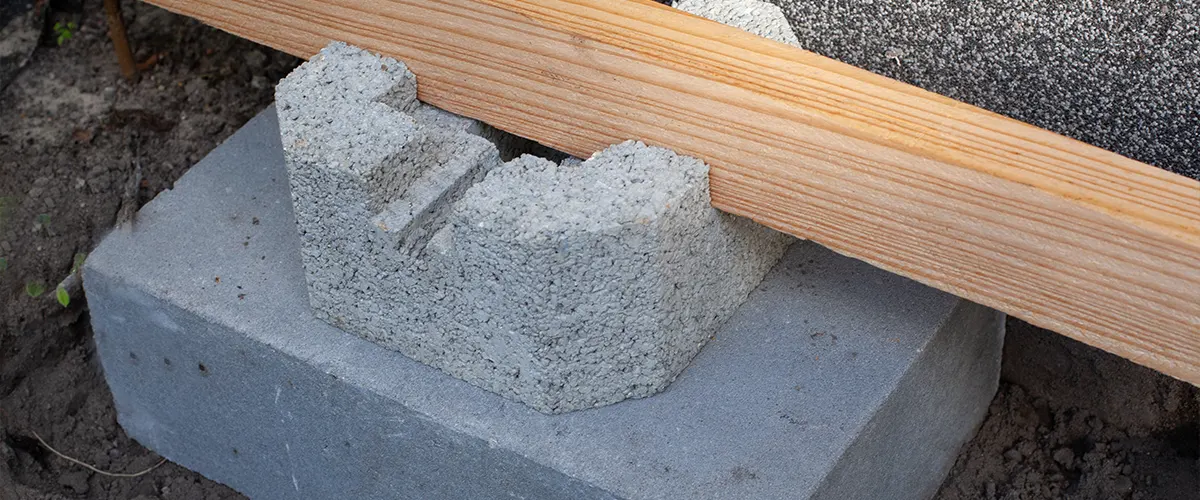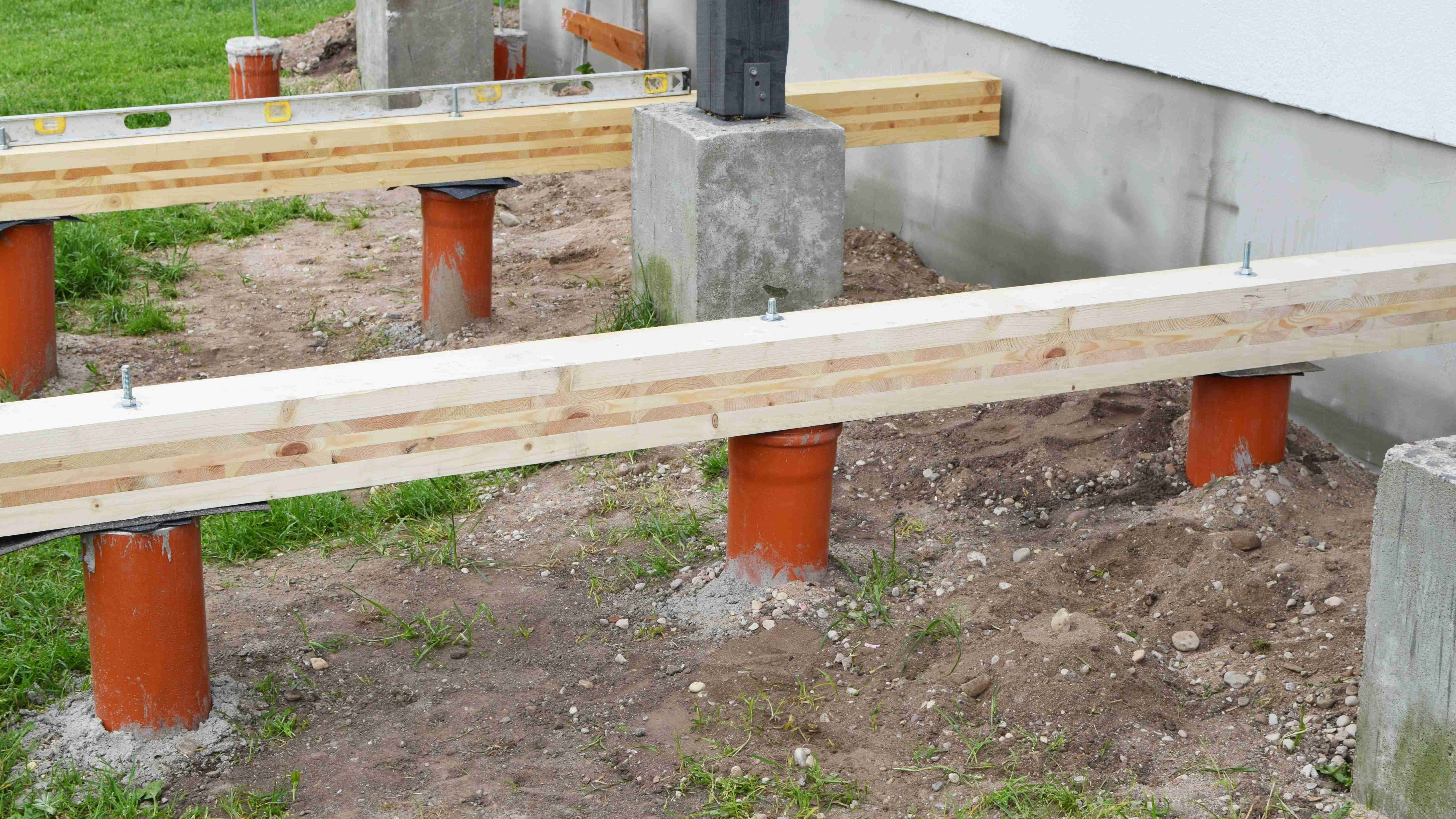Deck Footings 101: Navigating the Essentials for a Stable and Durable Deck
Wiki Article
Make Best Use Of the Lifespan of Your Deck With Trusted and Strong Grounds
In order to fully optimize the lifespan of your deck, it is crucial to make sure that it is constructed on trustworthy and solid grounds. These footings form the structure of your deck, offering security and assistance, and are commonly the difference between a deck that lasts for years and one that requires continuous repair services. In this conversation, we will certainly explore the value of trusted grounds, the different kinds of solid footing materials, appropriate installment methods, and just how to maintain and check your deck's footings to stop damages.Value of Dependable Footings
The relevance of reputable footings can not be overstated when it pertains to making the most of the life-span of your deck. The grounds serve as the foundation upon which the entire framework relaxes, supplying stability and support. Without a strong ground, the deck is vulnerable to moving, sinking, and even collapse, which can considerably reduce its lifespan and position security threats.

Selecting the appropriate type of footing is likewise vital. Working with a professional to analyze the soil, layout the grounds, and make sure appropriate installment is extremely recommended.
Buying reputable grounds may entail added expense and effort upfront, however it is a beneficial financial investment that will add to the lasting longevity and security of your deck. By ensuring a solid structure, you can enjoy your deck for several years to come, understanding that it is developed to hold up against the test of time.
Types of Strong Footing Materials
To make sure the security and durability of your deck, it is important to take into consideration the different kinds of solid ground products available. The selection of footing product is vital as it gives the essential support and security to endure the weight and tons of the deck framework.One typical and trustworthy material used for deck grounds is concrete. Concrete grounds are sturdy and provide excellent security. They can be put directly right into the ground or use precast concrete grounds for less complicated installment. One more option is helical piers, which are steel shafts with helical plates that are screwed right into the ground. These piers supply outstanding load-bearing ability and can be used in various dirt conditions.
For locations with inadequate soil problems, such as loose or extensive dirts, a ground system that uses steel or composite piers may be chosen. Deck Footings. These piers are driven deep into the ground to get to secure dirt layers, making sure the stability of the deck
In some situations, deck footings can additionally be created making use of treated lumber. Nonetheless, it is very important to make certain that the lumber is appropriately dealt with to withstand rot and decay brought on by exposure to dampness and bugs.
When selecting a ground material for your deck, it is critical to think about factors such as dirt conditions, environment, and regional building regulations. Consulting with a specialist service provider or architectural designer can aid identify the most ideal footing material for your particular deck project.
Appropriate Installment Strategies for Footings
Considering the value of ensuring security and longevity for your deck, it is vital to recognize the correct installation techniques for grounds. The success of your deck task depends greatly on the integrity of its foundation, which is why following the proper setup strategies is crucial.Primarily, it is necessary to establish the appropriate dimension and deepness of the footings based on the layout and lots needs of your deck. This details can be gotten from developing codes or with consultation with a structural engineer. As a general guideline, grounds ought to go to the very least 12 inches in diameter and prolong below the frost line to protect against moving or settling.
When the measurements are developed, the following action is excavation. Digging the openings for the footings ought to be made with precision, seeing to it they are deep sufficient and have a level bottom. Deck Footings. This will provide a stable base for the grounds
To additionally enhance the stability of the grounds, it is advised to make use of a concrete combine with a toughness of at the very least 3,000 psi. This will certainly make certain the grounds can withstand the weight and forces exerted by the deck.
Throughout installation, it is essential to maintain the footings level and aligned properly. This can be achieved by using a level and string lines to guide the placement of each footing.
Keeping and Evaluating Your Deck's Grounds
Regular upkeep and extensive examinations are essential for making sure the long-lasting stability and safety of your deck's grounds. dig this Over time, footings can catch tear and put on, climate problems, and dirt activity, which can endanger their structural stability. look at this website To maximize the life-span of your deck's grounds, it is essential to implement a regular upkeep routine and carry out complete examinations.
Furthermore, it is important to evaluate footings for any signs of damage or damage. This includes monitoring for fractures, divides, or falling apart concrete, as well as any kind of signs of movement or settlement. Any type of concerns must be addressed without delay to stop further damage and make sure the security of the deck.
Moreover, it is suggested to inspect the bordering soil for any type of indicators of erosion or moving. Soil motion can affect the security of the footings, so it is essential to address any kind of soil-related issues quickly.
Signs of Footing Damage and Exactly How to Address Them
Footing damages can position major threats to the stability and safety and security of your deck, making it important to quickly recognize and deal with any signs of wear and tear. Among one of the most typical indications of footing damages is clearing up or sinking of the deck. This can take place because of soil erosion, inadequate footings, or inadequate building methods. If you observe that your deck is unequal or leaning, it is vital to take immediate activity to stop further damages. An additional indicator of footing damages is collapsing or fracturing of the concrete grounds. This can be triggered by freeze-thaw cycles, too much moisture, or bad high quality concrete. It is important to have them inspected and repaired by a specialist if you observe any type of fractures or wear and tear in the grounds. In addition, if you notice any type of activity or moving of the deck, such as a deck that really feels unstable when strolled on or totters when weight is used, maybe an indication of footing damages. In such cases, it is advised to seek advice from with a structural engineer or a professional specialist to examine the degree of the damage and identify the ideal strategy. Keep in mind, dealing you could check here with ground damages without delay can aid guarantee the long-term stability and safety and security of your deck.Conclusion
In final thought, making certain the integrity and toughness of grounds is important for making the most of the life expectancy of your deck. By using solid footing materials and properly installing them, you can prevent damage and preserve the stability of your deck.These footings create the structure of your deck, offering security and assistance, and are usually the difference between a deck that lasts for decades and one that calls for continuous repair work. In this conversation, we will certainly discover the value of trustworthy grounds, the different kinds of strong ground materials, correct installment techniques, and how to preserve and examine your deck's grounds to stop damage.Normal upkeep and thorough examinations are necessary for guaranteeing the long-lasting stability and safety and security of your deck's footings. Bear in mind, resolving footing damages promptly can help guarantee the long-term security and safety of your deck.
By using solid ground materials and appropriately installing them, you can protect against damage and maintain the security of your deck.
Report this wiki page